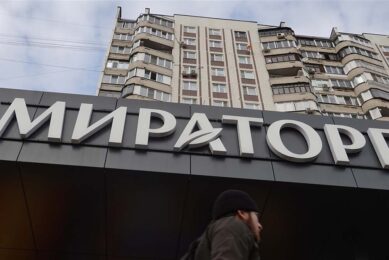Colombia’s pig sector facing challenges

The country’s pig industry is facing new challenges: diseases and imports. Colombia is dealing these issues despite its pig industry growing strongly, especially in the department of Antioquia where there is rapid development.
Where are the pigs?
In 2015 Colombia had about 200,000 pig farm sites, with in total 4.6 million pigs. About more than half of the pigs (2.5 million) are held in the most pig dense provinces; Antioquia (1.6 million), Cundinamarca (0.5 million) and Valle del Cauca (0.4 million). One third of the pigs are held in backyard systems and about two third in ‘technified farms’ – or farms producing pigs indoors. The group contains around 20,000 farms having less than ten sows. In 2015, Colombia counted 46,500 technified farms, with a total of 204,500 sows.
Figure 1 – Number of pigs weaned per sow per year in Colombia.

In the last decade, there has been a serious increase in Colombia’s pig production. Its pig inventory almost doubled from 2.5 million in 2005 to 4.6 million in 2015. In the most pig dense province Antioquia the pig population almost quadrupled: from 465,000 in 2005 to 1.6 million in 2015.
There is a continuous pressure on cost of production if the sector aims to develop further. Production costs are mainly made up by feed costs. This is shown by a summary of production cost from the Bogotá area. For a pig leaving a farm, feed costs represent 74-78%, followed by labour costs (6-8%), breeding stock costs (4.5-5%), buildings (2.6%) and medication (2.6%).
Pork production
In 2014 the total pig sector officially produced 260 million tonnes of pork, with preliminary estimates for 2015 even being around 20% higher. In reality, the tonnage is likely to be even higher than that, since the number of (backyard) pigs slaughtered illegally is thought to be 25%, according to the New Association for Pig Production (ANP).
Farm La Cumbre, Porcigenes, near Medellin in the Colombian province of Antioquia. The farm contains high health GGP Hypor breeding stock, imported from Canada. Photo: Patrick Charagu
Despite growing figures, Colombia’s pig industry went through a crisis in 2015. In the summer of 2015, media spoke of losses of 20,000-60,000 pesos (US$ 7-20) per marketed finisher between 120-150 kg. Pork import increases, high feed prices and the slowdown of the nation’s economy would have pushed the sector into a crisis.
Pork consumption
The consumption of fresh pork has increased in popularity over the last decades. The initial unpopularity of fresh pork in Latin America was related to the fear of deadly parasites like Trichinella spiralis. Outdoor systems can hardly guarantee being free of this disease.
A Porcigenes client farm in Antioquia province. Photo: Porcigenes S.A
Due to modern indoor farming systems where animals are grain-fed, the incidence of trichinosis has been drastically reduced to almost zero. Careful management and permanent veterinary control both in farms and slaughterhouses have complemented the system’s safety. As a consequence, fresh pork has gained a place on the Colombian menu next to other fresh meats and precooked or cured pork products and sausages.
Average consumption of pork in 2014 was estimated to be 7.4 kg, compared to a worldwide average of 40 kg and still very far away from the highest pork consumption worldwide, Hong Kong at 70 kg. There are quite some differences between provinces. The province of pig-dense Antioquia took the lead in production as well as consumption in 2014 with an average consumption of nearly 25 kg per person. This increase is due to more differentiation in pork dishes. People do not only eat roast pork and the typical dishes like ‘chicharrón’ (deep fried pig skin with pork), but diversify to meat balls, pig feet and other fresh pork dishes.
The first pigs in Colombia European pig breeds related to present Iberian pigs were introduced around 1525 with the first settlers in Colombia, which has resulted in many feral pig breeds amongst which ‘Zungo’ is the most common. Strangely enough, the introduction of the first pigs by the Spanish settlers, was not because of meat supply, but to provide lard (empella), because cultivation of olives did not prosper in the new land. Nowadays, with modern genetics having taken over, most feral populations are shrinking. Only 3-5% of the pigs are traditional breeds or crosses nowadays, mostly kept in outdoor production systems. |
Animal health situation
The first outbreak of PEDv in Colombia took place in March 2014. Since then there has been a steady increase in the number of new cases. Between December 2014 and January 2015 there was unofficial information about a possible case of PEDv in the most pig-dense province of Colombia, Antioquia. Because of this the Colombian Agricultural Institute (ICA) and Colombia’s Pig Producers Association (Asoporcicultores) started a monitoring system based on offering free diagnosis for suspicious cases of PEDv. Their measures included arranging quarantine and transport control for the detected positive cases of PEDv.
During 2015 there were 185 notifications of potential positive cases to the ICA. About 90 of them were confirmed positive. Positive cases were spread across five departments. Among them the pig-dense department of Antioquia (70 cases), Cundinamarca (9 cases), Valle del Cauca (8 cases), Nariño (2 cases) and Santander (1 case).
Four months earlier in June there were 107 notifications, which gave 43 positive confirmed cases. It means that the amount of positive cases in the second half of 2015 seems to be more than 50% higher than in the first months of the year. This leads to the conclusion that PEDv is still spreading.
In the meantime eradication of Classical Swine Fever (CSF) is still in progress. Due to several outbreaks between 2013 and 2015 in the less pig-dense provinces of the Atlantic coast area, a vaccination programme was put in place. During 2015 another 50 outbreaks took place in this area. Until recently the pig dense areas remained free of CSF. In October 2015 a new outbreak in the province of Santander was confirmed. Due to this from October 2015 onwards the vaccination programme was re-initiated for a large number of provinces including Antioquia.
Trade deal with US
Trade developments are also likely to have a strong, rather unfavourable influence on Colombia’s own pig producing industry.
The United States-Colombia Trade Promotion Agreement (CTPA) is a bilateral trade agreement signed in 2006; having come into effect in 2012. This agreement states that most tariffs on imported and exported agricultural products will be lowered in steps and finally phased out completely. Most important for the sector are – the phasing out of the Colombian 25% import tariff on corn over 12 years and the phasing out of Colombian import tariffs on pork products ranging from 20-30%. Estimates by the US international Trade Commission predict that full implementation will boost pork exports to Colombia by 72%. The Colombian sector has to compete at US market level with both feed ingredient prices and pork prices moving closer towards US pricing.
Figure 3 – Estimated costs of production in 2016.

In 2015 the first signs of the US influence became visible, as quota limits appear to be too narrow for meeting the strong demand in today’s market. On top of that, there has been an exchange rate influence of the US dollar. The dollar rate, averaging around 1,800 to 2,000 pesos over the period 2010-2013, in 2015 increased to rates of 3,100 pesos. As Figure 3 shows, should the 3,100 pesos exchange rate continue, then average production costs will be 20.5% higher than in 2014. Needless to say, if the exchange rate deteriorates, production costs will rise even further, putting pressure on the market.
Figure 2 – Share of pig meat from Canada.

Simultaneously, tariffs and quota contingents are improving when viewed from a US and Canadan perspective. In 2015, for example, Canada could export a contingent of 5,600 tonnes of pork to Colombia at a tariff of 4%. In 2016 the contingent even increases to 5,750 tonnes tariff-free (Figure 2) – a situation that will stay this way.
Challenges for Colombia’s pig sector
Altogether there has been a tremendous development in the Colombian pig sector in the last decade. During the present and coming years there will be serious challenges to overcome. The sector has to show it can deal properly with pig diseases like CSF and PEDv, which are currently threatening its development. Also the impact of the CTPA will become visible in the markets in the coming decade.
Technification of farms will progress further and implementation of best practices will prove their value. But it will be hard to manage and control the nation’s pork production with more than 30% of pigs still farmed in backyards and about 25% of pigs slaughtered illegally. The uncertainty on how the exchange rate of Colombia’s peso against the US dollar will develop as well as how the nation’s pork industry will react to the phasing out of tariffs on pork and corn, creates uncertainty for the sector in the coming decade.
Colombia at a glance

Source: Pig Progress magazine – Volume 32.1 (2016)
 Beheer
Beheer











 WP Admin
WP Admin  Bewerk bericht
Bewerk bericht